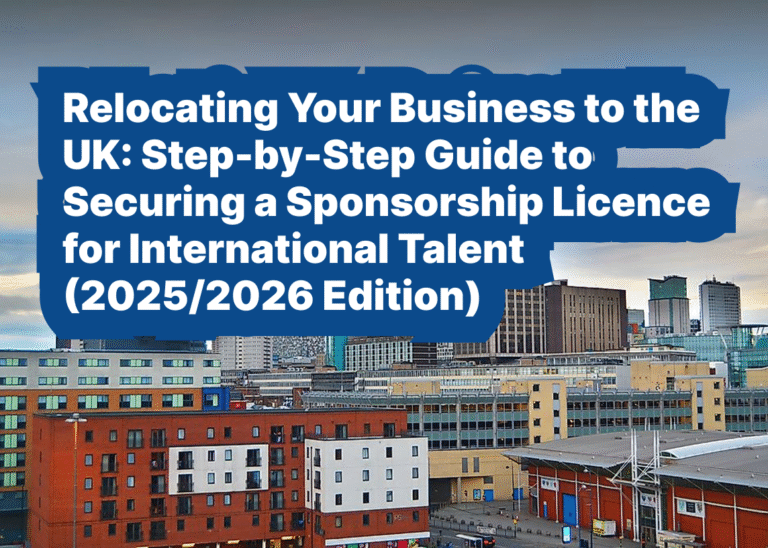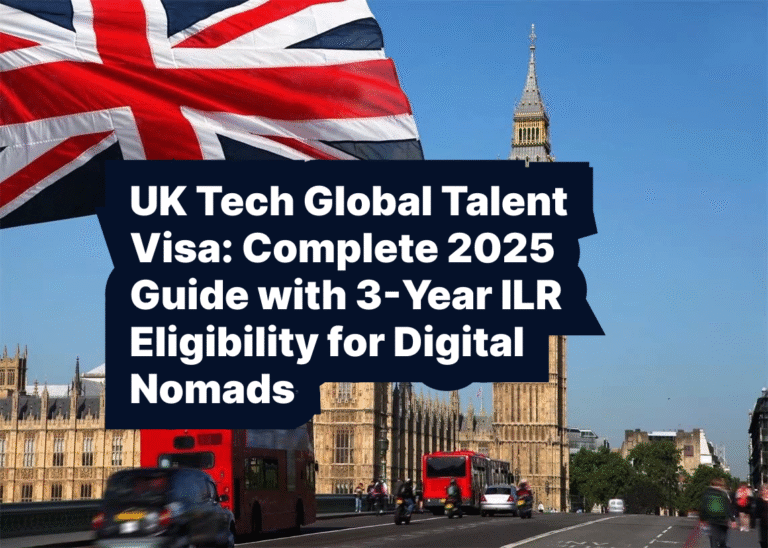Navigating the United States immigration system can feel overwhelming, but with the right information and preparation, your journey to obtaining a USA visa becomes much more manageable. Whether you’re seeking temporary work authorization, permanent residency, or planning to bring family members to the United States, this comprehensive guide will walk you through the essential steps and requirements for 2025.
Understanding the USA Visa System
The United States operates one of the world’s most complex immigration systems, with dozens of visa categories designed to serve different purposes. At the highest level, visas are divided into two main categories: nonimmigrant visas for temporary stays and immigrant visas for permanent residence.
Nonimmigrant visas include categories such as tourist visas (B-2), business visas (B-1), student visas (F-1), and various work visas including H-1B for specialty occupations, L-1 for intracompany transfers, and O-1 for individuals with extraordinary abilities. Each category has specific requirements, processing times, and limitations on activities permitted in the United States.
Immigrant visas, on the other hand, are designed for those seeking permanent residence, commonly known as a “green card.” These include family-based immigration, employment-based categories, diversity visas, and special immigrant categories. The path to permanent residence often requires sponsorship from either a family member who is a US citizen or permanent resident, or from a US employer.
Types of Visa Sponsorship
Understanding sponsorship is crucial to your immigration journey. Sponsorship essentially means that someone or some entity takes legal responsibility for your immigration petition and, in many cases, provides financial support guarantees to the US government.
Family-Based Sponsorship allows US citizens and permanent residents to petition for certain family members. US citizens can sponsor spouses, unmarried children under 21, parents (if the citizen is over 21), married children of any age, and siblings. Permanent residents can sponsor spouses and unmarried children only. The relationship determines both eligibility and priority in processing, with immediate relatives of US citizens receiving the highest priority.
Employment-Based Sponsorship occurs when a US employer petitions for a foreign worker. This process typically begins with the employer demonstrating that they cannot find qualified US workers for the position through a process called labor certification. The employer must also prove they can pay the offered wage and meet other regulatory requirements.
Self-Sponsorship opportunities exist in certain categories, particularly for individuals with extraordinary abilities, outstanding researchers and professors, or those seeking national interest waivers. These categories allow individuals to petition for themselves without requiring a specific employer sponsor.
Step 1: Determine Your Visa Category
Your first and most important step is identifying the correct visa category for your situation. This decision will determine your entire application strategy, required documentation, processing times, and ultimate pathway to your immigration goals.
For temporary work authorization, consider your qualifications and the nature of your intended employment. The H-1B category requires a bachelor’s degree and specialty occupation, while the L-1 category is designed for executives, managers, or employees with specialized knowledge transferring within multinational companies. The O-1 category is reserved for individuals with extraordinary ability in sciences, arts, education, business, or athletics.
If your goal is permanent residence, evaluate whether you qualify for family-based immigration through relationships with US citizens or permanent residents. Employment-based immigration requires careful assessment of your education, skills, and the availability of US employers willing to sponsor you. Each employment-based preference category has different requirements and processing times, with higher preference categories generally processing faster.
Consider also whether you might qualify for special programs such as the Diversity Visa Lottery, which provides up to 50,000 immigrant visas annually to individuals from countries with low rates of immigration to the United States. Religious workers, certain international organization employees, and other special categories may also have specific pathways available.
Step 2: Find a Qualified Sponsor
Securing appropriate sponsorship is often the most challenging aspect of the immigration process. For family-based immigration, this means having a qualifying relative who is willing and able to serve as your sponsor. Your sponsor must be a US citizen or permanent resident, meet minimum income requirements, and agree to file an Affidavit of Support promising to financially support you if necessary.
Employment-based sponsorship requires finding a US employer willing to navigate the complex and expensive process of sponsoring a foreign worker. This typically involves demonstrating that no qualified US workers are available for the position, obtaining labor certification from the Department of Labor, and filing multiple forms with US Citizenship and Immigration Services.
Building relationships with potential sponsors requires strategic networking, professional development, and often significant time investment. For employment-based cases, consider targeting companies with established immigration programs, multinational corporations with experience in visa processes, or employers in industries experiencing worker shortages.
When evaluating potential sponsors, ensure they understand their legal obligations and have the financial capacity to meet sponsorship requirements. Sponsors must demonstrate sufficient income or assets to support you at 125% of the federal poverty level, and they remain legally responsible for reimbursing any means-tested public benefits you might receive for up to 10 years or until you become a US citizen.
Step 3: Gather Required Documentation
Documentation requirements vary significantly by visa category, but preparation and organization are essential for success. Start collecting documents early, as obtaining certain items can take months, particularly from foreign governments or educational institutions.
Personal documents typically include birth certificates, marriage certificates, divorce decrees, passports, and photographs meeting specific US government requirements. Educational credentials require careful attention, as foreign degrees and diplomas often need evaluation by approved credential evaluation services to demonstrate US equivalency.
Financial documentation is crucial for most visa applications. Sponsors must provide tax returns, employment letters, bank statements, and other evidence of financial stability. Beneficiaries may need to demonstrate that they will not become public charges through evidence of education, skills, work history, and financial resources.
Medical examinations must be conducted by designated civil surgeons or panel physicians, depending on your location. These examinations include vaccinations, blood tests, chest X-rays, and general physical examinations. Mental health evaluations may be required in certain circumstances.
Criminal background checks are required from all countries where you have lived for six months or more since age 16. These documents must meet specific formatting requirements and may need official translations if not in English.
Step 4: File Your Petition
The petition filing process varies depending on your visa category and current location. Most family-based and employment-based immigrant visa petitions begin with Form I-130 or Form I-140 filed with US Citizenship and Immigration Services. These forms establish the basic relationship between sponsor and beneficiary and determine your priority date for visa processing.
Accuracy and completeness are essential when filing petitions. Even minor errors can result in delays, requests for additional evidence, or denials. Consider working with qualified immigration attorneys, particularly for complex cases involving criminal history, previous immigration violations, or unusual circumstances.
Filing fees have increased significantly in recent years, with most immigrant petitions requiring fees of several thousand dollars when including all associated costs. Fee waivers are available in limited circumstances for those who demonstrate financial hardship.
After filing, you will receive a receipt notice confirming USCIS has received your petition. This receipt includes a case number you can use to track your case status online. Processing times vary dramatically by service center and petition type, ranging from several months to several years.
Step 5: Wait for Priority Date to Become Current
For most immigrant visa categories, demand exceeds the annual supply of visas, creating backlogs that require waiting periods before you can proceed to the final steps. Your priority date, typically the date your petition was filed, determines your place in line for visa processing.
The Department of State publishes monthly Visa Bulletins showing which priority dates are current for each visa category and country of birth. Citizens of China, India, Mexico, and the Philippines often face longer waiting periods due to per-country limits that prevent any single country from receiving more than seven percent of available visas in most categories.
During this waiting period, it’s crucial to maintain your status if you’re in the United States and keep your documentation current. Notify USCIS of any address changes, and inform them of significant life events such as marriage, divorce, or the birth of children that might affect your case.
Consider whether you might qualify for other visa categories with shorter processing times. For example, individuals waiting for employment-based green cards might pursue H-1B or L-1 status to work legally while waiting, or students might maintain F-1 status to continue their education.
Step 6: Complete Form DS-260 or Adjust Status
Once your priority date becomes current, you can proceed with the final steps of your immigration process. If you’re outside the United States, you’ll typically complete consular processing by filing Form DS-260, the Online Immigrant Visa Application, and attending an interview at a US embassy or consulate in your home country.
If you’re already in the United States in valid status, you may be eligible to adjust status by filing Form I-485, Application for Adjustment of Status to Permanent Resident. This process allows you to obtain your green card without leaving the United States, which can be particularly advantageous if you have family, work, or other commitments that make travel difficult.
The choice between consular processing and adjustment of status depends on various factors including your current location, immigration history, and personal circumstances. Consular processing is generally faster but requires international travel and separation from US-based family or employment. Adjustment of status allows you to remain in the United States but may take longer and includes restrictions on international travel during processing.
Both processes require comprehensive background checks, medical examinations, and interviews with immigration officers. Preparation for these interviews is crucial, as officers will verify the information in your application and assess your eligibility for permanent residence.
Step 7: Attend Your Immigration Interview
The immigration interview represents the culmination of your visa application process and requires careful preparation. Officers will review your application, verify supporting documents, and assess your eligibility for the requested visa category.
Arrive early for your interview with all requested documents organized and easily accessible. Dress professionally and bring your spouse and any children included in your application. Review your application thoroughly beforehand, as officers may ask detailed questions about information you provided months or years earlier.
Common interview topics include the basis for your visa petition, your relationship with your sponsor, your plans in the United States, your criminal and immigration history, and your ability to support yourself financially. Answer questions honestly and directly, asking for clarification if you don’t understand something.
Language interpretation services are available if you’re not comfortable conducting the interview in English. However, demonstrate any English language abilities you possess, as this can be beneficial for certain visa categories and your future success in the United States.
If your case requires additional documentation or administrative processing, the officer will inform you of next steps. This additional processing can add weeks or months to your case, but it doesn’t necessarily indicate problems with your application.
Step 8: Receive Your Visa and Plan Your Entry
Upon approval, immigrant visa applicants will receive their visa stamped in their passport, along with a sealed packet of documents to present to Customs and Border Protection officers upon entry to the United States. This packet should not be opened, as it contains confidential information for immigration officials.
You must enter the United States within the validity period of your immigrant visa, typically six months from the date of issuance. Your green card will be mailed to the address you provided within a few weeks of your entry, officially granting you permanent resident status.
Plan your initial entry carefully, ensuring you have adequate financial resources for your first few months in the United States. Consider temporary housing arrangements, whether you need to transfer professional licenses or credentials, and how you’ll establish credit history and banking relationships.
Understand your rights and responsibilities as a new permanent resident. You can live and work permanently in the United States, travel internationally with some restrictions, and apply for citizenship after meeting residency requirements. However, you must also pay taxes on worldwide income, register for Selective Service if required, and maintain your permanent resident status through continuous residence.
Common Challenges and How to Overcome Them
Immigration processes inevitably involve challenges that can delay or complicate your case. Document authentication problems are common, particularly for applicants from countries with different record-keeping systems or those who have lived in multiple countries. Start collecting documents early and work with experienced document preparation services when necessary.
Language barriers can create misunderstandings that lead to application errors or interview difficulties. Consider working with qualified interpreters or immigration attorneys who speak your native language, and take English classes to improve your communication abilities for long-term success in the United States.
Financial requirements often present obstacles, particularly for family-based sponsors who must demonstrate sufficient income to support additional household members. Explore options for joint sponsors, who can combine their income with the primary sponsor to meet requirements, or consider whether sponsors might qualify based on assets rather than current income.
Processing delays are unfortunately common in the current immigration system, with many cases taking significantly longer than published processing times. Stay informed about your case status, respond promptly to any requests for additional information, and maintain valid status if you’re in the United States during processing.
Important Updates for 2025
The immigration system continues evolving with new policies, procedures, and fee structures. Stay informed about changes that might affect your case, particularly regarding priority date movements, processing times, and documentation requirements.
Recent policy changes have emphasized the importance of complete and accurate applications, with increased scrutiny of documentation and more detailed interviews. This trend reinforces the value of thorough preparation and professional guidance for complex cases.
Technology improvements have made some processes more efficient, with expanded online filing options and better case tracking systems. However, these improvements also mean that errors in electronic submissions can be more difficult to correct, emphasizing the importance of accuracy in initial filings.
Final Tips for Success
Success in the US immigration system requires patience, persistence, and careful attention to detail. Start your process early, as most cases take longer than initially expected. Maintain organized records of all communications with government agencies and keep copies of all documents you submit.
Consider working with qualified immigration attorneys, particularly for complex cases or if you’ve had previous immigration violations. While professional assistance adds cost to your process, it can prevent expensive mistakes and provide valuable guidance through complex procedures.
Stay informed about your case status and immigration policy changes that might affect you. Join reputable online communities or local immigrant support groups where you can learn from others’ experiences and get emotional support during what can be a stressful process.
Most importantly, don’t give up if you encounter setbacks or delays. The US immigration system, while complex and sometimes frustrating, provides legitimate pathways for millions of people to achieve their American dreams each year. With proper preparation, qualified assistance when needed, and persistence through challenges, your immigration goals are achievable.
Your journey to US immigration represents an investment in your future and possibly your family’s future. The process demands time, money, and emotional energy, but the opportunities available in the United States often justify these investments for those who successfully navigate the system. Take it step by step, celebrate small victories along the way, and keep your ultimate goals in mind as motivation through the more challenging moments of your immigration journey.







